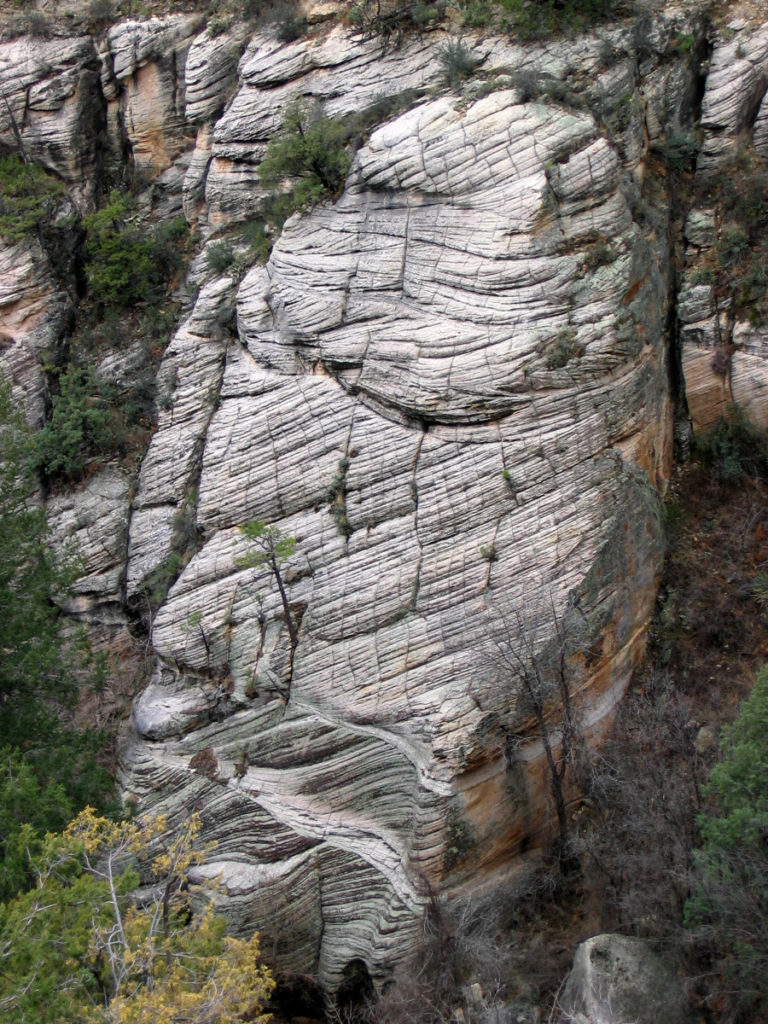Ryan Anderson • Mar 19, 2009
Planetary Surface Processes Field Trip: Day 5
Meteor Crater, Walnut Canyon, and Red Mountain
This article originally appeared on Ryan Anderson's "The Martian Chronicles" blog and is reposted here with permission.
(This is day 5 of a week-long planetary geology field trip to Arizona. Get caught up with days 1, 2, 3, and 4.)

Today was a long and awesome day. We started out at Meteor Crater, the youngest and best preserved impact crater on Earth! Our guide today was Shawn Wright, a colleague from the Hawaii field workshop, among other places. He showed us infrared images of the crater taken from an airplane and we walked around the rim trying to identify the main compositions detected. Meteor Crater is especially nice for this because it excavated into three distinct layers: the red Moenkopi siltstone (the surface of the surrounding plains), the yellowish Kaibab limestone (normally beneath the Moenkopi), and the white Coconino sandstone (below the Kaibab).
Back in the early 1900s, people were trying to dig and find the iron meteorite that they thought was buried under the crater (it turns out the meteorite was blasted into thousands of pieces upon impact). Luckily, the mining work carved a notch in the rim that lets you see the three units of the crater where they have been overturned by the impact. When a large impact occurs, it lifts up the ground and forms an “overturned flap” at the rim. You can see in the picture that the Moenkopi goes from relatively solid-looking to very fractured-looking, and is then overlain by blocks of Kaibab and Coconino.




Support our core enterprises
Your support powers our mission to explore worlds, find life, and defend Earth. You make all the difference when you make a gift. Give today!
Donate

 Explore Worlds
Explore Worlds Find Life
Find Life Defend Earth
Defend Earth

